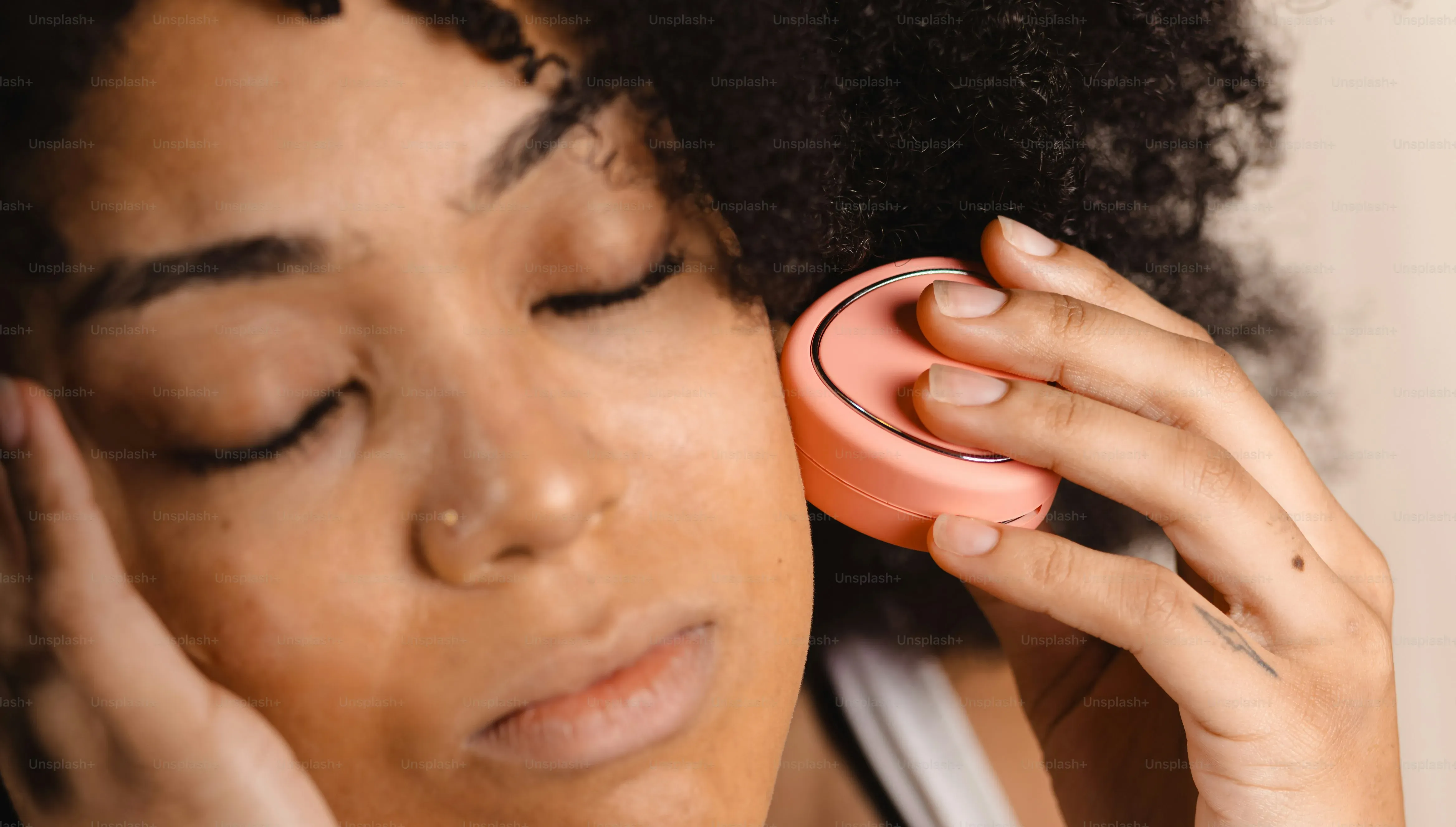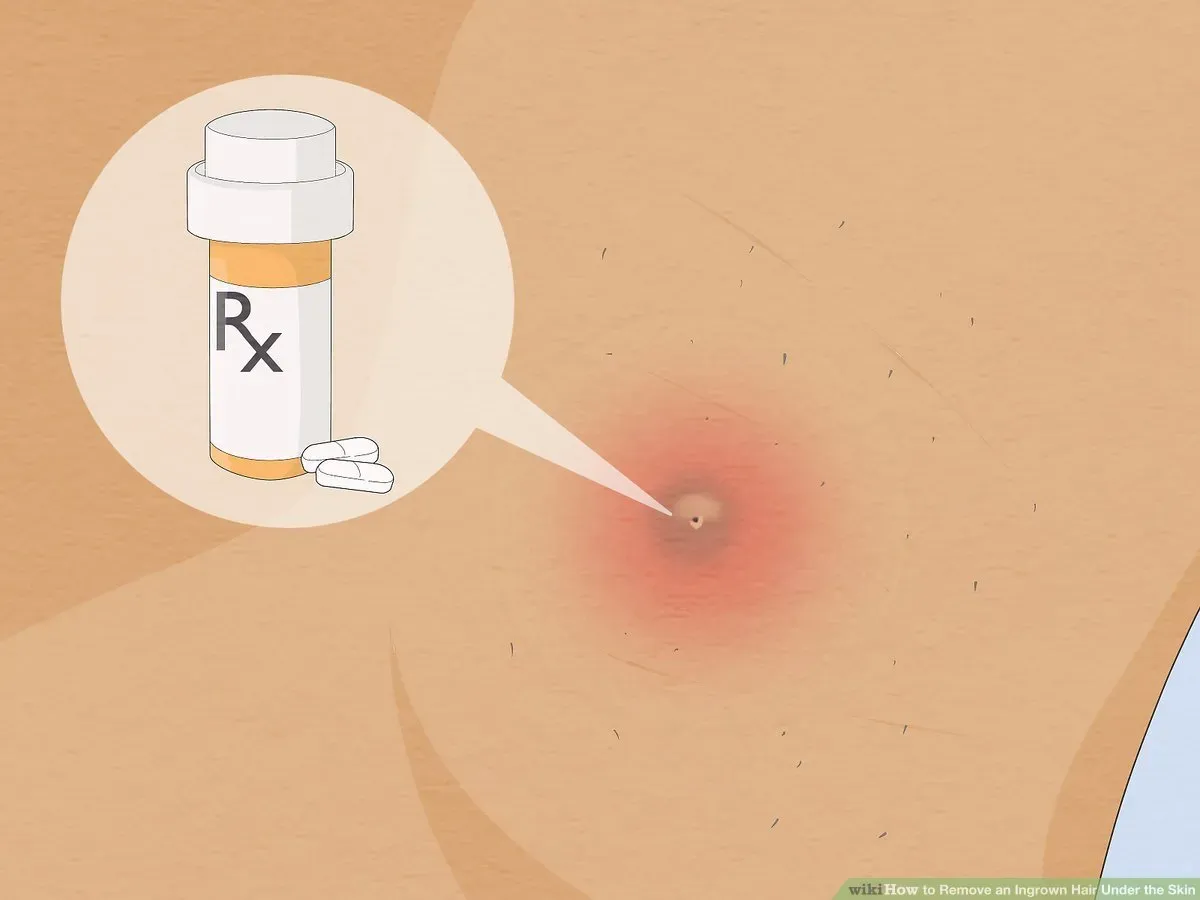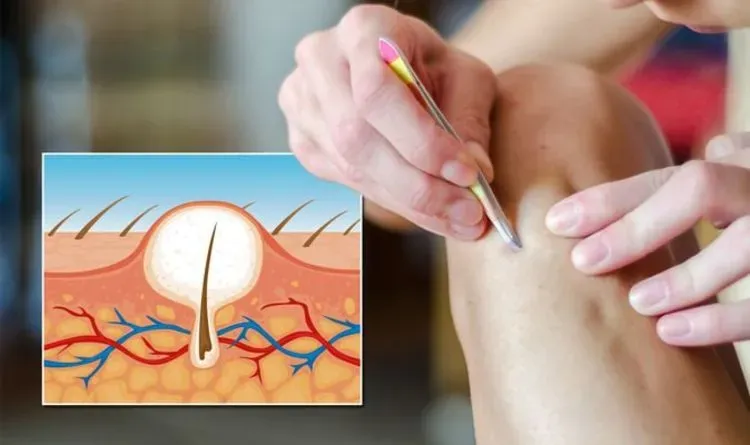Table of Contents
Alright, let's be honest. You feel that little bump under your skin, maybe it's a bit red, a bit tender. The first thought that pops into many minds is, "Can I just squeeze this ingrown hair out?" It's a natural, albeit often regrettable, impulse. That tiny coil of hair trapped beneath the surface feels like something that just needs a little pressure to release it from its epidermal prison. But hold on a second before you go applying force. While the idea of quickly popping it might seem like the fastest path to relief, the reality of squeezing ingrown hair involves more risk than reward. This isn't just some minor skin annoyance you can manhandle into submission. We're going to break down exactly what an ingrown hair is, why the urge to squeeze is so strong, and more importantly, why you should resist it. We'll cover the potential fallout from trying to force the issue and look at what you should actually do instead to find relief and prevent these pesky bumps from forming in the first place.
What Exactly Are Ingrown Hairs?

What Exactly Are Ingrown Hairs?
The Basic Biology of a Trapped Hair
so let's get down to it. What are these little nuisances we call ingrown hairs? Think of a hair follicle like a tiny tunnel under your skin where a hair grows. Normally, the hair pops straight out the opening and continues on its merry way. An ingrown hair happens when that hair, instead of growing outwards, curls back and re-enters the skin, or sometimes, it just gets blocked and can't break through the surface at all. It's like a traffic jam in your skin, but with hair. Your body doesn't really appreciate this unexpected intruder, so it often reacts with inflammation, treating the hair like a foreign object it needs to deal with.
Common Culprits Behind the Problem
So, why does this happen? A big reason is often hair removal. Shaving is a prime suspect. When you shave, especially if the blade isn't sharp or you're shaving against the grain, you can create a sharp tip on the hair. This tip makes it easier for the hair to pierce the skin instead of growing out. Waxing and plucking can also cause issues, sometimes breaking the hair off unevenly below the skin's surface. Tight clothing rubbing against the skin right after hair removal doesn't help either; it can push hairs back down or irritate the area, making it harder for them to emerge properly. Certain hair types, particularly coarse or curly hair, are more prone to becoming ingrown because of their natural tendency to curl.
- Shaving too closely or against the grain
- Using dull razor blades
- Waxing or plucking hairs
- Wearing tight clothing post-hair removal
- Naturally curly or coarse hair
- Dry skin that blocks follicles
What They Look and Feel Like
You usually spot an ingrown hair as a small, raised bump on the skin. It might be red, sometimes looking a bit like a pimple. You might even see the tiny hair coiled up inside or looping back into the skin's surface. They can pop up anywhere you have hair – legs, armpits, face (especially for guys who shave), and the bikini area are common spots. Beyond the visible bump, they can feel itchy, tender, or even painful, especially if they become inflamed or infected. Sometimes, they just sit there, a quiet, annoying bump. Other times, they make their presence known with a throbbing ache.
Why Squeezing Ingrown Hair is a Bad Idea

Why Squeezing Ingrown Hair is a Bad Idea
The Temptation is Real, But Misguided
let's talk about that urge. You see the bump, you feel the pressure, and your brain says, "Aha! A blockage! If I just apply some focused external force, I can liberate that trapped hair!" It feels intuitive, doesn't it? Like popping a zit, you think you're just helping the body expel something that shouldn't be there. You picture that little hair springing free, instant relief washing over the area. This is the core of the problem right here – the assumption that squeezing an ingrown hair works the same way as clearing a pore. Spoiler alert: it absolutely does not, and trying to force it out is like trying to politely ask a stubborn mule to move by kicking it. It usually just makes things worse.
You're Likely Pushing Things Deeper
When you squeeze an ingrown hair, you're not applying precise surgical pressure. You're essentially mashing the area. That coiled hair isn't just sitting on the surface waiting for a gentle nudge; it's often embedded or looping back into the dermis. Applying pressure from the sides often doesn't coax the hair out. Instead, you're more likely to push the hair shaft further into the skin tissue. You also risk pushing bacteria, skin oils, and debris deeper into the follicle and the surrounding irritated tissue. Think of it as trying to unclog a drain by stomping on the pipe; you're just compacting the gunk and potentially breaking the pipe itself. This mechanical trauma just inflames the area more and makes it harder for the hair to find its way out naturally.
- Increased redness and swelling
- More pain or tenderness
- Risk of pushing the hair deeper
- Potential damage to the surrounding skin
- Introduction of surface bacteria
Opening the Door to Infection and Worsening the Problem
Here's where squeezing ingrown hair goes from a potentially ineffective strategy to an actively harmful one. Your fingers, no matter how clean you think they are, carry bacteria. The surface of your skin also has bacteria. When you forcefully squeeze and potentially break the skin's surface or damage the follicle wall, you're creating an open invitation for those bacteria to enter the deeper layers of your skin. This is how a simple, annoying bump turns into a full-blown, painful infection with pus. An infected ingrown hair is a whole different beast – it can become larger, more painful, and may require antibiotics to clear up. What started as a minor cosmetic issue can quickly escalate into something that leaves scarring or hyperpigmentation (dark spots) long after the bump is gone. It’s just not worth the gamble.
Real Risks of Squeezing Ingrown Hair

Real Risks of Squeezing Ingrown Hair
Beyond the Ouch: Scarring and Discoloration
so we've established that squeezing ingrown hair is generally a bad move because of the infection risk. But let's talk about the aftermath, even if you manage to avoid a full-blown bacterial invasion. Every time you pick, poke, or squeeze an area, you're causing trauma to the skin. This trauma can lead to something called post-inflammatory hyperpigmentation. Basically, your skin gets irritated and responds by producing extra melanin, which results in a dark spot left behind after the bump finally calms down. These dark spots can hang around for weeks or even months, a little reminder of your ill-advised skin adventure. In more severe cases, or if you really go to town on the area, you can even cause scarring. These aren't always raised, angry scars; sometimes they're just changes in skin texture or small depressions. It’s like your skin is saying, "Remember that time you tried to play dermatologist? Here's a little souvenir."
Think of it like bruising a peach. Once you've bruised it, that spot is never quite the same. Your skin is a lot more resilient than a peach, thankfully, but repeated trauma from squeezing can definitely leave its mark. I once had a friend who was absolutely obsessed with getting rid of any tiny bump on his face. He’d spend forever in the mirror, convinced he could just 'pop' anything. Fast forward a few months, and he had a constellation of little dark marks and some textural changes where those bumps used to be. He eventually learned his lesson, but not before his skin paid the price.
Increased Pain and Inflammation
Let's not forget the immediate consequences of squeezing ingrown hair: pain and increased inflammation. You're already dealing with a bit of irritation from the trapped hair. Adding forceful pressure, especially with fingernails, just ramps everything up. You're literally stressing the tissue. This can make the area much more tender to the touch, more visibly red, and potentially more swollen. It's like poking a bruise – it just makes it hurt worse. This heightened inflammation can also make it *harder* for the hair to come out on its own. Your body's defense mechanisms kick in, increasing blood flow and swelling to the area, which can further compress the follicle opening. So, not only are you causing yourself more immediate discomfort, you might be making the underlying problem harder to resolve naturally. It’s a classic case of trying to help but actually hindering.
- More intense redness
- Increased swelling
- Greater tenderness and pain
- Potential for prolonged healing time
- Risk of chronic inflammation
Better Ways to Handle Ingrown Hairs

Better Ways to Handle Ingrown Hairs
Patience and Gentle Care
so you've resisted the urge to start squeezing ingrown hair like it owes you money. Good. Now, what do you actually do? The first, and often hardest, step is patience. Many ingrown hairs will resolve on their own if you just leave them alone. Your body is pretty good at figuring things out eventually. While you're waiting, keep the area clean. Wash it gently with a mild soap and warm water. Avoid harsh scrubbing, which can just make things worse. Think of it less like an enemy invasion and more like a stubborn house guest you're trying to politely encourage to leave. Give it space, keep the environment clean, and see if it moves along.
Warm Compresses and Exfoliation
If the ingrown hair isn't showing signs of leaving and is still bothering you, you can try to coax it out. A warm compress can be surprisingly effective. Soak a clean washcloth in warm (not hot) water and hold it against the area for 10-15 minutes several times a day. This can help open the follicle and soften the skin, making it easier for the hair to emerge. Gentle exfoliation can also help remove dead skin cells that might be trapping the hair. Use a soft brush, a washcloth, or a mild exfoliating scrub in a circular motion. Do this *before* you see an ingrown hair as a preventative measure, but if you already have one, be incredibly gentle to avoid irritating it further. The goal is to remove the barrier, not to scrub your skin raw.
Method | How it Helps | Caution |
|---|---|---|
Warm Compress | Opens follicle, softens skin | Ensure cloth is clean, water not too hot |
Gentle Exfoliation | Removes dead skin cells | Use mild product/tool, be very gentle on active bumps |
Leaving it Alone | Allows natural healing | Requires patience, monitor for infection |
When to Call in the Pros
Sometimes, despite your best efforts, an ingrown hair just won't budge, or worse, it starts looking angry – more red, more swollen, maybe even showing signs of pus. This is when you need to stop trying DIY solutions and consult a healthcare provider. They can safely extract the hair using sterile tools, prescribe topical creams to reduce inflammation or fight infection, or in some cases, oral antibiotics. Trying to dig it out yourself with tweezers or needles at home is essentially playing doctor in a non-sterile environment, which, as we've covered, invites infection and scarring. Don't risk turning a minor issue into a medical problem. Professional help is available, and it's a much safer route than trying to perform bathroom surgery after watching questionable online videos. For persistent issues or if you're tired of dealing with ingrown hairs altogether, considering professional treatments like laser hair removal might be an option. You can explore services like those offered at hairawaybylaser.com to address the root cause.
Stopping Ingrown Hairs Before They Start

Stopping Ingrown Hairs Before They Start
Prepping Your Skin for Smoother Sailing
Look, the best way to avoid the whole mess of squeezing ingrown hair is to prevent them from showing up in the first place. Think of it as proactive warfare against annoying bumps. A major step is getting your skin ready *before* you even think about shaving, waxing, or whatever your hair removal method of choice is. This means exfoliation. Gently removing those dead skin cells that can block the hair follicle opening is key. You can use a physical scrub, a loofah, or even chemical exfoliants like salicylic or glycolic acid, depending on your skin's sensitivity and the area you're treating. Doing this a day or two *before* hair removal gives your skin a clean slate. Also, make sure your skin is clean and hydrated before you start. Dry, tight skin is less forgiving and more likely to trap hairs.
Smart Moves During and After Hair Removal
prep is done. Now for the main event. If you're shaving, ditch the dull blades immediately. A sharp blade cuts the hair cleanly; a dull one yanks and tears, increasing the likelihood of that sharp, problematic tip. Shave *with* the grain, not against it, especially in areas prone to ingrowns. This reduces how closely you cut the hair, making it less likely to retract and curl back. Use a good quality shaving gel or cream to provide lubrication. After hair removal, rinse the area with cool water to close the pores. Then, apply a soothing, non-comedogenic lotion or product designed to prevent ingrown hairs. Look for ingredients like salicylic acid or witch hazel, which can help keep follicles clear and reduce inflammation. Avoid super tight clothing right away that can rub and irritate the freshly defuzzed skin. Give your skin some breathing room.
- Exfoliate 1-2 days before hair removal
- Use a sharp razor blade
- Shave with the hair growth direction
- Use a lubricating shave gel/cream
- Rinse with cool water post-shave
- Apply soothing, non-comedogenic lotion
- Avoid tight clothing immediately after
So, What's the Final Word on Squeezing?
Look, the urge to mess with a skin imperfection is powerful, especially when it's something as irritating as an ingrown hair. But as we've laid out, the temporary satisfaction you might get from squeezing ingrown hair simply isn't worth the potential fallout – think infection, scarring, and making things generally worse. Your skin isn't a stress ball. There are effective, less dramatic ways to encourage that stubborn hair to emerge or to handle it if it's truly becoming a problem. Prioritizing gentle care, patience, and preventative measures like smart hair removal techniques and exfoliation will save you a lot of grief down the line. If a bump is angry, painful, or shows signs of infection, put down the tweezers and step away from the mirror. Sometimes, the best action is no action, or better yet, seeking advice from someone who actually knows what they're doing with skin issues.
